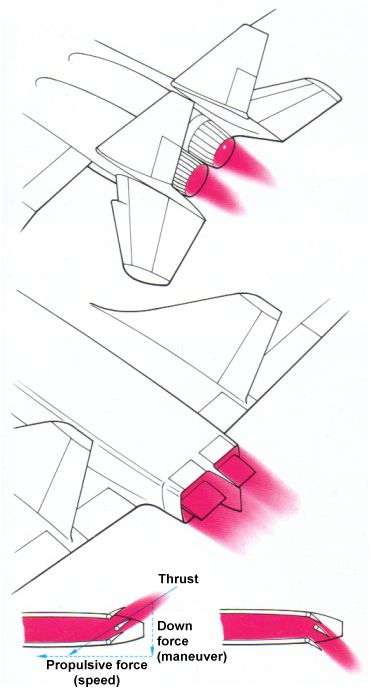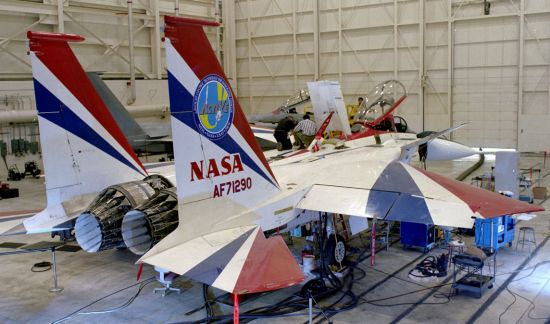|
||||||||||
|
|
||||||||||
|
||||||||||
|
|
||||||||||

Two-dimensional nozzles, on the other hand, are capable of not only directing the thrust along the axis of the engine, but can deflect to vector the thrust and produce a force that points the nose of the plane in a different direction. This type of nozzle is at the heart of what is known as thrust vectoring. The nozzles depicted above are capable of vectoring the thrust up or down to produce an up force or down force. Down force will force the aircraft nose to pitch upward while up force has the opposite effect. The two nozzles can also be deflected differentially (one producing up force, the other down force) to provide roll control.
I suppose a nozzle that deflected thrust left or right would also be considered a 2D nozzle, so long as it was not capable of deflecting up and down as well. However, I've never heard of any aircraft employing such a nozzle, which could be used to improve maneuverability in yaw. A nozzle capable of deflecting both up and down as well as right and left is a 3D nozzle.
To date, only a handful of aircraft have made use of 2D or 3D thrust vectoring nozzles. Probably the most well known of these are the American F-22 Raptor and Russian Su-37, both employing 2D nozzles for improved maneuverability in pitch.

Only research aircraft are known to have tested 3D nozzle technology so far, these including the X-31 and F-15
ACTIVE (Advanced Control Technology for Integrated VEhicle). It is likely that this technology will eventually
make its way into a production fighter, at least if becomes simple enough for a standard pilot (who doesn't
have the cat-like reflexes of a test pilot) to control.
- answer by Jeff Scott, 22 September 2002
Read More Articles:


|
Aircraft | Design | Ask Us | Shop | Search |

|
|
| About Us | Contact Us | Copyright © 1997- | |||
|
|
|||